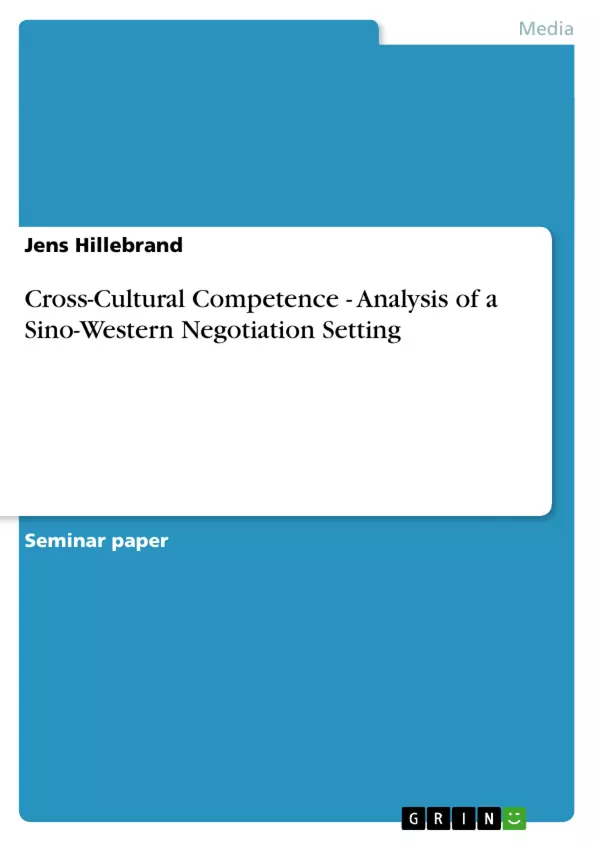This study analyses the challenges of cross-cultural negotiation settings by using a variety of cultural frameworks and theories. Basis for the analysis forms an incident between a Western company and the Chinese county which it operates in. The analysis reveals that major issues are grounded in different attitudes towards hierarchy, varying importance of group membership and loyalty as well as the cultures’ different perception of time. Further difficulties may result from distinct degrees of explicitness and differences in uncertainty avoidance. Concluding that awareness of cultural differences is crucial for successful negotiation outcomes the study will finally offer practical suggestions how to deal with the cultural challenges faced by each of the negotiating parties.
Inhaltsverzeichnis (Table of Contents)
- Executive Summary
- Introduction
- Analysis: Cultural Theory Applied
- Hofstede: Culture's Consequences
- Hall: High-Context vs. Low-Context Cultures
- Logic Paradigms within Cultures
- Conclusion
- Recommendation
- References
Zielsetzung und Themenschwerpunkte (Objectives and Key Themes)
This study analyzes the challenges of cross-cultural negotiation settings by using a variety of cultural frameworks and theories. It focuses on a specific incident between a Western company and the Chinese county it operates in. The analysis reveals that major issues stem from different attitudes towards hierarchy, varying importance of group membership and loyalty, and the cultures' different perception of time.
- Cultural differences in negotiation settings
- Impact of cultural frameworks on negotiation dynamics
- Importance of understanding cultural nuances for successful outcomes
- Analysis of specific cultural dimensions like power distance, individualism vs. collectivism, and uncertainty avoidance
- Practical recommendations for navigating cultural challenges in negotiations
Zusammenfassung der Kapitel (Chapter Summaries)
- Executive Summary: Provides a concise overview of the study, outlining the analysis of cross-cultural negotiation challenges using cultural frameworks and theories. It highlights the key issues identified and offers practical suggestions for addressing them.
- Introduction: Introduces the context of cross-cultural management and the significance of analyzing cultural challenges in international business negotiations. It presents the case study of ColourBest Holding (Hong Kong) Ltd. and its joint venture with the Agricultural Machinery Corporation of Zhengcheng County, China, highlighting the conflict arising from environmental issues and the subsequent need for negotiation.
- Analysis: Cultural Theory Applied:
- Hofstede: Culture's Consequences: Explores Hofstede's cultural framework and its application to the negotiation setting. It discusses the significance of power distance, individualism vs. collectivism, long-term vs. short-term orientation, and uncertainty avoidance in understanding the dynamics between the Chinese and Western negotiators.
Schlüsselwörter (Keywords)
Key terms and concepts explored in the study include cross-cultural negotiation, cultural frameworks, Hofstede's dimensions, power distance, individualism vs. collectivism, long-term vs. short-term orientation, uncertainty avoidance, high-context and low-context cultures, logic paradigms, and practical recommendations for navigating cultural challenges in international business settings.
- Quote paper
- Jens Hillebrand (Author), 2007, Cross-Cultural Competence - Analysis of a Sino-Western Negotiation Setting, Munich, GRIN Verlag, https://www.grin.com/document/90125



